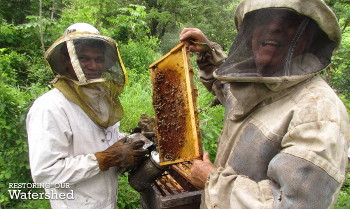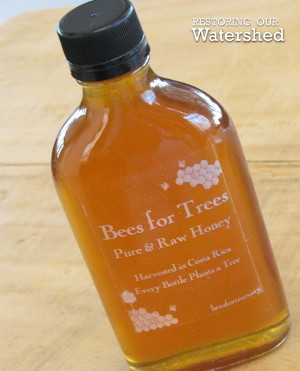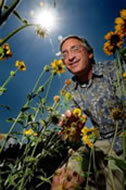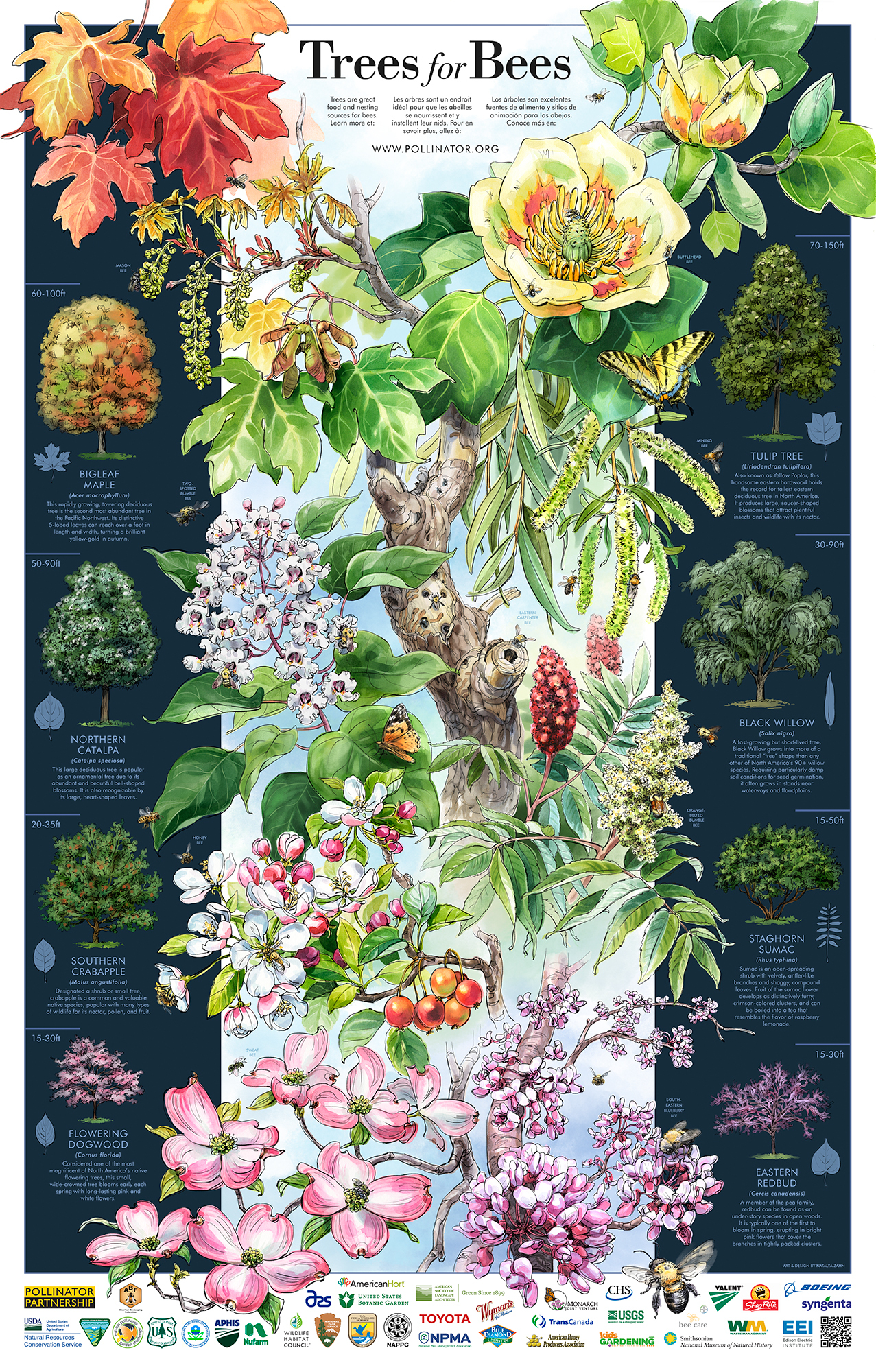Trees for Bees
Trees are great food and nesting sources for bees
Trees of North America
OVERVIEW
Most people are familiar with the flowering annual and perennials in their flower beds that attract bees and other pollinators. They may be less familiar with the fact that bees forage for pollen and nectar up in the tree canopy. With their profusion of flowers, trees are a convenient food source for bees and other pollinators.
Trees densely covered with thousands of flowers give pollinators an abundant source of nectar and pollen in one place. Foraging efficiency for the bees is beneficial as it requires less energy searching for further food sources and reduces stress. Bees rely on food sources throughout the year. Trees that bloom early in spring give a boost to bees that have depleted their stores of honey during the winter. Summer-flowering trees provide a meal of nectar and pollen during the hottest months of the year after spring flowers have bloomed.
Trees also provide nesting opportunities for bees that make their nests in holes, hollows, or crevices in tree branches and trunks. Dead trees, trunks, or branches that contain old beetle borings serve as nesting substrates for cavity-nesting bees as well. The Eastern Carpenter Bee, Xylocopa virginica, seen on the poster is an example of a bee that relies on trees for nesting.
Native flowering trees are not only beneficial to foraging bees and other insects but also to the larvae of many native butterflies and moths that feed upon tree foliage, much like the Painted Lady, Vanessa sp., featured on the poster.
Tree Identification
The Pollinators
OVERVIEW
Pollination occurs when pollen is moved within flowers or carried from flower to flower by wind, water, or pollinating animals. Almost 90% of all flowering plants rely on animal pollinators for fertilization, and about 200,000 species of animals act as pollinators. Of those, hundreds are hummingbirds, bats, and small mammals such as mice. The rest are insects like beetles, flies, bees, ants, wasps, butterflies and moths. Plants can also be pollinated by wind and water. The transfer of pollen in and between flowers of the same species leads to fertilization, and successful seed and fruit production for plants. Pollination ensures that a plant will produce full-bodied fruit and a full set of viable seeds.
Worldwide, approximately 1,000 plants grown for food, beverages, fibers, spices, and medicines need to be pollinated by animals in order to produce the goods on which we depend. In the United States, pollination by honeybees and other insects produces $40 billion worth of products annually.
Learn more about the pollinator lifecycle here and how you can help protect them here!
POLLINATOR IDENTIFICATION
Resources
All plant specimen images courtesy of the U.S. National Herbarium, Smithsonian Institution
WEB RESOURCES
TEXT RESOURCES
Cane, J. and J.A. Payne. 1988. Foraging ecology of the bee Habropoda laboriosa (Hymenoptera: Anthophoridae), an oligolege of blueberries (Ericaceae: Vaccinium) in the southeastern United States. Annals of the Entomological Society of America 81: 419-427.
Kraemer, M.E. and F.D. Favi. 2005. Flower phenology and pollen choice of Osmia lignaria (Hymenoptera: Megachilidae) in Central Virginia. Environmental Entomology 34: 1593-1605.
Ostaff, D.P., A. Mosseler, R.C. Johns, S. Javorek, J. Klymko and J.S. Ascher. 2015. Willows (Salix spp.) as pollen and nectar sources for sustaining fruit and berry pollinating insects. Canadian Journal of Plant Science 95: 505-516.
Rhoades, P.R., W.E. Klingeman, R.N. Trigiano and J.A. Skinner. 2011. Evaluating pollination biology of Cornus florida L. and C. kousa (Buerger ex. Miq.) Hance (Cornaceae: Cornales). Journal of the Kansas Entomological Society 84(4): 285-297.
Stephenson, A. and W. Thomas. 1977. Diurnal and nocturnal pollination of Catalpa speciosa (Bignoniaceae). Systematic Botany2(3): 191-198.
Stubbs, C.S., H.A. Jacobson, E.A. Osgood and F.A. Drummond. 1992. Alternative forage plants for native (wild) bees associated with lowbush blueberry, Vaccinium spp., in Maine. Maine Agricultural Experiment Station Technical Bulletin 148.
Related Projects
BEES FOR TREES

Since 2013, Bees for Trees has been creating green jobs for Costa Rican farmers while protecting a critical ecosystem and water resource. The program was developed by Restoring Our Watershed (ROW), a non-profit organization with the mission to revitalize the Nandamojo river basin. The Nandamojo encompasses some 29,000 acres and is located on Costa Rica’s northwest Pacific coast.
Through Bees for Trees, ROW enables watershed families to start beekeeping by providing them with a loan to buy ten hives and the necessary equipment. In exchange for this opportunity, families reforest 10% of their land, which usually corresponds to about two acres. Loan recipients repay ROW in honey instead of cash. ROW aggregates all honey from the program, bottling and marketing it under the Bees for Trees brand. All profits from the enterprise are used to fund ROW’s restoration work.

After launching a pilot project in 2013 with just one family and fifteen hives, Bees for Trees has grown to benefit six families who are managing close to 100. Perhaps most importantly, 4,000 native species saplings have been planted through this program, meaning 15 acres under reforestation.
ROW’s vision is to create a transformative business that will provide the equivalent of a full salary for at least 10 families and $15,000 annually to fund restoration work. The success of Bees for Trees will provide a model for sustainable businesses and environmental protection.

To learn more, please visit beesfortrees.org or contact matt@ourwatershed.org
Credits
This webpage was made possible with the help and advice of many people. We especially want to thank the following people for their much appreciated input!

Dr. Stephen Buchmann received his doctorate in entomology from the University of California, Davis. His current research interests include native bee nesting behavior, conservation biology and pollination ecology, especially buzz pollination.

Dr. David Inouye is a Professor in the Department of Biology at the University of Maryland, College Park. David is on the Steering Committee of the North American Pollinator Protection Campaign, and the Scientific Advisory Board of the Endangered Species Coalition.

Gary Krupnick is the head of the Plant Conservation Unit in the Department of Botany, National Museum of Natural History at the Smithsonian Institution in Washington, D.C. His research examines how data from herbarium specimens can be used in assessing the conservation status of plant species.
About the Artist

Natalya Zahn is a Boston-based natural illustrator and designer. Originally from the green mountains of Vermont, she majored in Illustration at the Rhode Island School of Design, studying abroad throughout France, Australia, and New Zealand. Adept in numerous traditional and digital media techniques, she creates textural, expressive imagery that has appeared in print publications, product packaging and apparel, and as part of educational exhibits for museums. Her passion for biology, zoology and anatomy subjects has led to collaborations with clients including National Geographic, the Harvard Museum of Comparative Zoology, Longwood Botanical Garden and the San Diego Zoo. A proud member of the Guild of Natural Science Illustrators, Natalya works, surrounded by taxidermy, skeletons, and other natural artifacts, out of a studio in Somerville, MA. Her portfolio is available at natalya.com
THE POSTER DESIGN PROCESS
Preparing the final drawing for watercoloring

This design started with digital sketches that were based on a field guide style layout (large, detailed images of trees down the center, flanked on either side with columns containing species identification and stats). The goal was to include as wide and diverse a variety of tree species as possible (depicting everything from showy blossoms, to diminutive flower clusters, to bright fruiting bodies, and even colorful fall foliage. Peppered throughout the central column of trees are assorted bee species - again, the goal was to include a diverse array of insects, and a unique species of bee was paired with each tree species.
With the acceptance of my concept sketch, research for the detailed (digital) drawing phase of the project commenced and included collecting species suggestions, scientific data, and imagery from the Pollinator Partnership's team of scientists. I also collected insight and feedback from a network of entomologists that I know as friends through the Harvard Museum of Comparative Zoology (around the corner from my home and studio). Through these rounds of expert consult and review the original poster concept was expanded to include a segment of dead tree branch, which would allow us to feature (Carpenter) bees using trees for shelter (in addition to nectar/food, and pollination).

Once the detailed drawing was approved by everyone the image was printed out at full scale (which required tiling many pieces of paper together) and carefully traced onto watercolor paper. Surrounded by my reference photos I then hand-painted all of the color for the poster with liquid watercolors. The finished watercolor paintings were scanned into the computer and dropped into the drawing file, behind the linework layer. Many hours of digital clean-up, color-correction, and adjustment later, the final, full-color art was complete.
TOOLS & MATERIALS
Arches 120 lb. cold press watercolor paper, watercolors (Dr. Ph. Martin's Hydrus Fine Art Liquid Watercolors), Robert Simmons watercolor brushes, Adobe Photoshop (digital brush sets from kylebrush.com)
